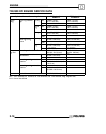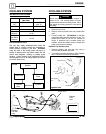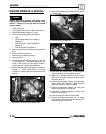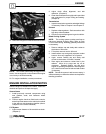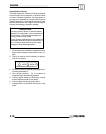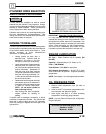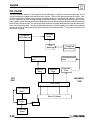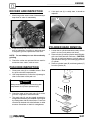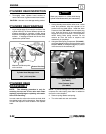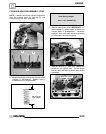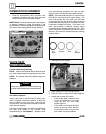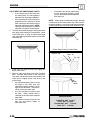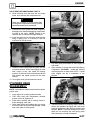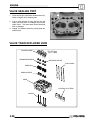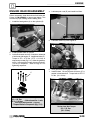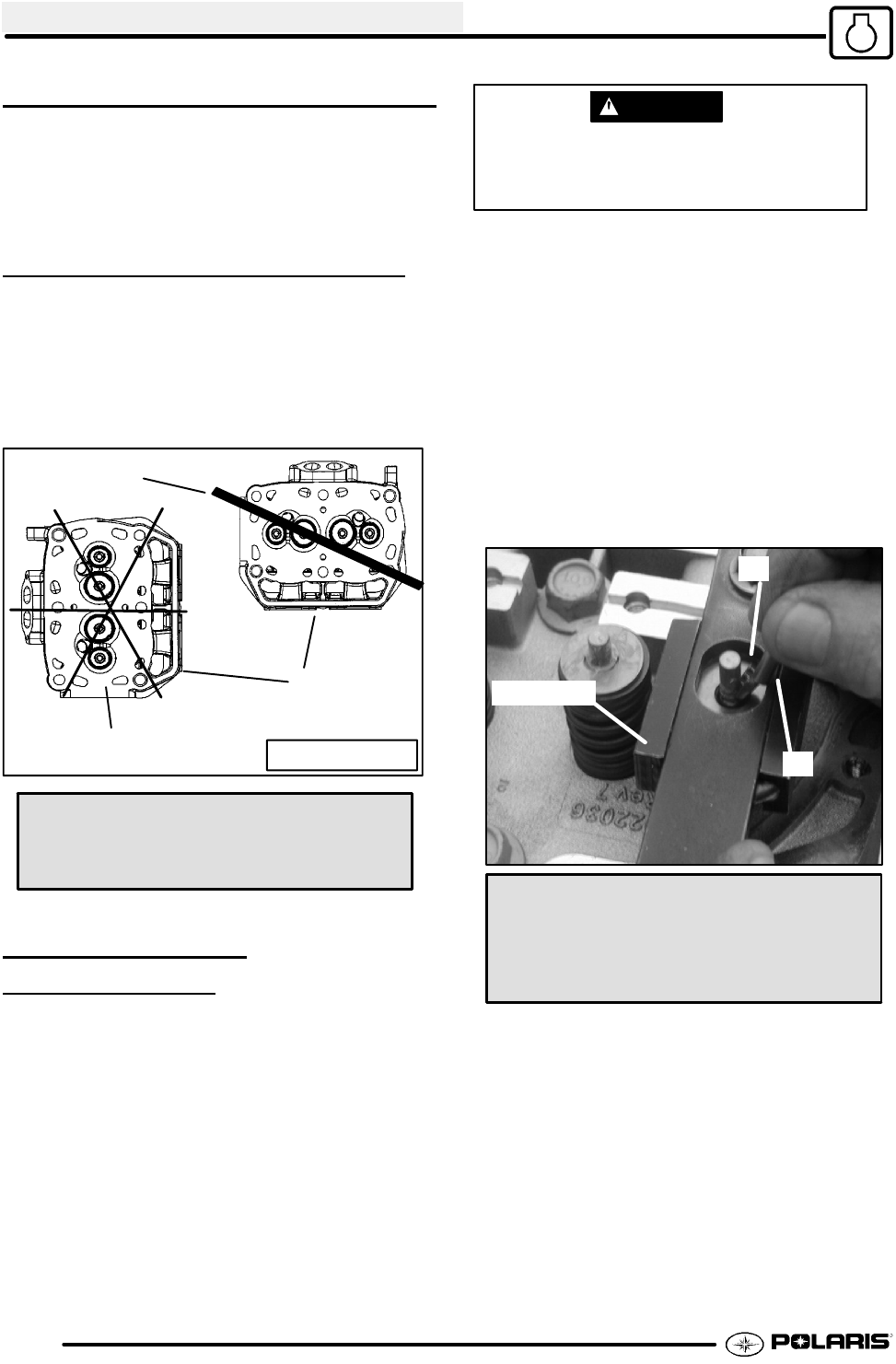
ENGINE
3.22
CYLINDER HEAD INSPECTION
1. Thoroughly clean cylinder head surface to
remove all traces of gasket material and carbon.
CAUTION: Use care not to damage sealing surface.
CYLINDER HEAD WARPAGE
1. Lay a straight edge (A) across the surface of the
cylinder head (B) at several different points and
measure warpage by inserting a feeler gauge
between the straight edge and the cylinder head
surface. If warpage exceeds the service limit,
replace the cylinder head.
Bottom Side View
B
A
Measure at different points
on the surface.
Cylinder Head Warpage Limit:
004″ (.1016 mm) Max.
CYLINDER HEAD
DISASSEMBL
Y
NOTE: The following procedure is only for
servicing the top end of the valve train when
replacing valve springs or replacing valve seals.
Valve Train Servicing
In some cases the valve train can be serviced while
the cylinder head is still on the engine. Keep all parts
in order with respect to their location in the cylinder
head.
WARNING
Wear eye protection or a face shield during
cylinder head disassembly and reassembly.
1. Having already removed the valve cover, rocker
arms and pushrods, align the cylinder to be
worked on at top dead center. Install the Valve
Pressure Hose (PU--45652) into the spark plug
hole. Hook the hose to an air compressor and
supply 50 to100 psi to the hose. This will seat the
valves during valve spring removal. Do not
remove air from the hose at anytime until
reassembly is completed.
2. Using the Valve Spring Compressor (PU--45257),
compress the valve spring and remove the valve
keepers. NOTE: Asmall parts magnet (A) can aid
in the removal of the retainers (B).
B
A
PU--45257
Valve Spring Compressor:
(PU--45257)
Valve Pressure Hose:
(PU--45652)
NOTE: To prevent damage to the valve seals, do not
compress the valve spring more than is needed to
remove the valve keepers.
3. Remove spring retainer and spring.
4. The valve seals are now serviceable.



